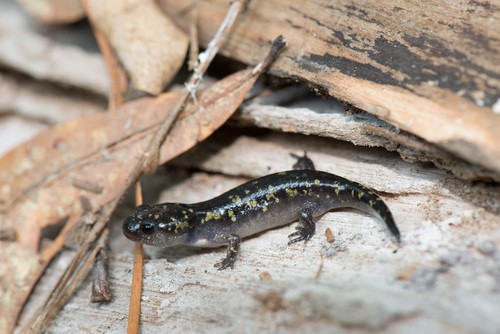Mole salamander
A species of Mole salamander Scientific name : Ambystoma talpoideum Genus : Mole salamander
Mole salamander, A species of Mole salamander
Scientific name: Ambystoma talpoideum
Genus: Mole salamander
Content
Description People often ask General Info
Description
The mole salamander (Ambystoma talpoideum) is a species of salamander found in much of the eastern and central United States, from Florida to Texas, north to Illinois, east to Kentucky, with isolated populations in Virginia and Indiana. Older sources often refer to this species as the tadpole salamander because some individuals remain in a neotenic state. This salamander lives among the leaf litter on the forest floor, migrating to ponds to breed.
People often ask
General Info
Lifespan
6-10 years
Diet
Mole salamander is a carnivorous species with a diet dominated by aquatic invertebrates. It extensively forages upon larvae, small crustaceans, mollusks, and various insects, showcasing a preference for soft-bodied prey.
Appearance
Mole salamander is a small to medium-sized mole salamander with a stout body and a broad head. It has textured, wet skin with coloration varying from dark brown to greenish-grey with darker spots. The tail is flat and rudder-like, aiding in swimming. Its North American subspecies may show brighter coloration during mating season.
Behavior
Mole salamander is known for its complex reproductive behavior, including breeding migrations driven by rainfall. These amphibians are typically solitary outside mating season but display cooperative behavior during breeding, forming 'breeding balls'. These communal nests often include multiple males competing for a single female. Mole salamander's primarily nocturnal, making use of its low-light adapted vision to catch and eat invertebrate prey.
Population
Stable
Scientific Classification
Phylum
Chordates Class
Amphibians Order
Salamanders Family
Mole salamanders Genus
Mole salamander Species
Mole salamander 